Enchanting Khiva
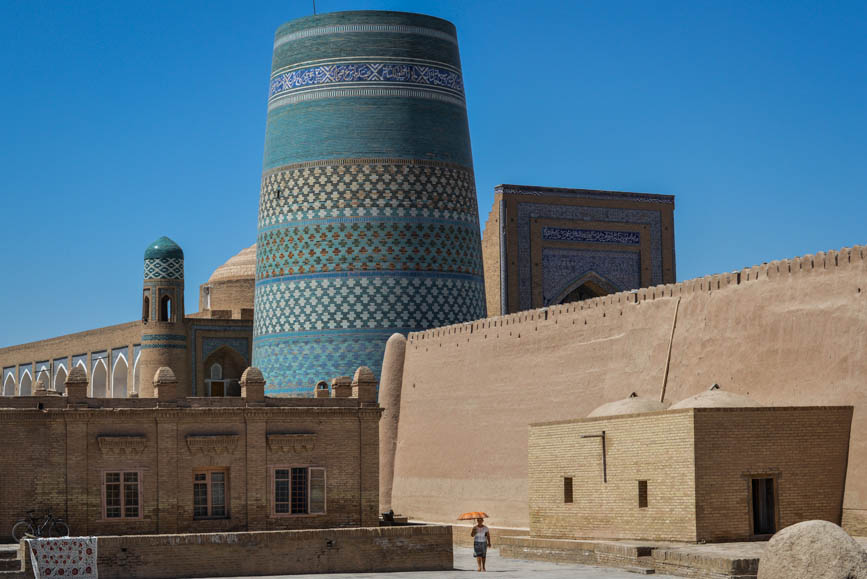
The barb-wired gate clanged shut as it bounced into its lock and we breathed a sigh of relief. Turning back to look at Turkmenistan one last time we squealed quietly not wanting to draw more attention from the guards, “Yeaaaay we made it out of Turkmenistan in one piece!”. Thank you, thank you and off we walk calmly through No Man’s Land to the gates of Uzbekistan. OK, that maybe slightly over dramatic, but I swear we thought “freeeedom!”. Surreal Turkmenistan is a story for another day.
The Uzbek guards are smiling and friendly, a welcome surprise since many people had told us about their border woes. It is smooth sailing into the country and when we ask the officer about the exchange rate he tells us it is about 1 USD to 2380 SOM, before winking and whispering, “but on the street you can get it for 3000”. Giddy with the excitement of being in a new country we go for a chat with the taxi drivers at the border, before finding Jahaladin who will take us on the 45 minute drive to Khiva.
The road from the Nukus border to Khiva is lined with villages, women and children walking about and never-ending green fields. No more bumpy roads! No more insanely loud car music! No more crazy oversized white marble buildings! We arrive at the entrance to the old city of Khiva, protected by its 10 metre high sandy brick ancient walls. The Itchan Kala, Khiva’s inner city, is awash in turquoise and wheat with a density of stunning monuments awaiting our awe.
The vibe is light, the smiles are friendly and being perhaps the most touristy country in Central Asia, Uzbekistan instantly throws us into a holiday mood. After months of happily being on the road in regions which do not really cater to tourists, we are suddenly jumping up and down at the sight of cafés, bars and restaurants, with wi-fi! Red wine! Nice hotels at affordable prices! That should be enough exclamations for now, but Khiva was a resort town to us after Eastern Turkey, Iran and Turkmenistan.
Within the walls of the Itchan Kala are buidlings that inspire the imagination to travel back in time. The breathtaking Tosh Hovli Palace is coated in mosaics spanning the whole spectrum of the colour blue, at one point we did not even realise we were in a different courtyard from the one we entered from, because we could not imagine there would be more than one that was that beautiful. All the spectacular ceiling woodwork is hoisted up by even more impressive pillars, carved and engraved with designs that are still perfectly well kept to this day.
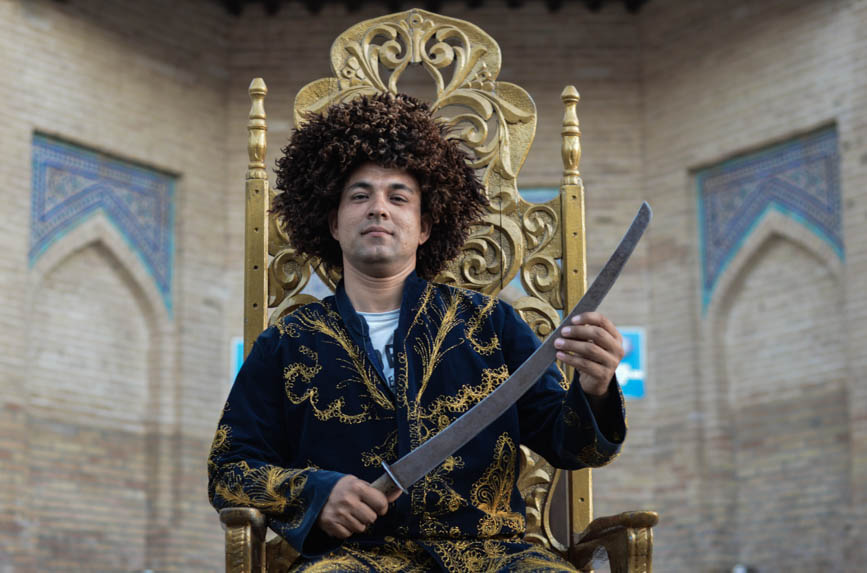
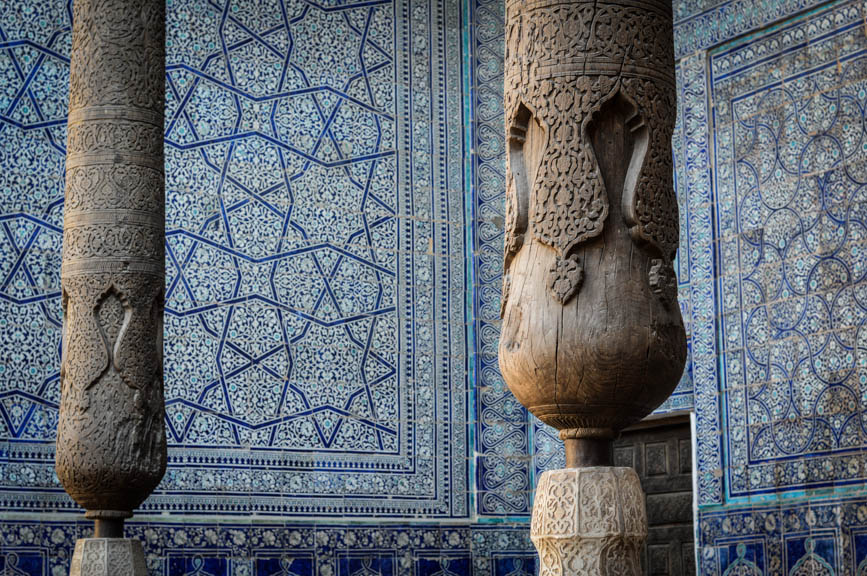

To see the various houses and museums within the old city, foreigners are sold a three day ticket where the only information of importance noted down is your country of origin. Most people do not really need three days to see all the monuments though and so a nifty way of lowering the price is to share it with someone else. By chance we encounter a lovely German couple we had previously met in Iran who did not need their ticket anymore, so off we went exploring on behalf of Deutschland. This was great except for the fact that most of the middle-aged Uzbek ladies guarding the entrances spoke more German than we did. Eager to welcome us in our own language, one woman tells us the extra entry fee to the top of the tower – “Drei Thousand Funf Hundert!” to which Nico whispers, “T’as compris?” haha. Luckily my high school German kicks in and Nico begins exclaiming “Dankeschön!” to anyone who will listen.
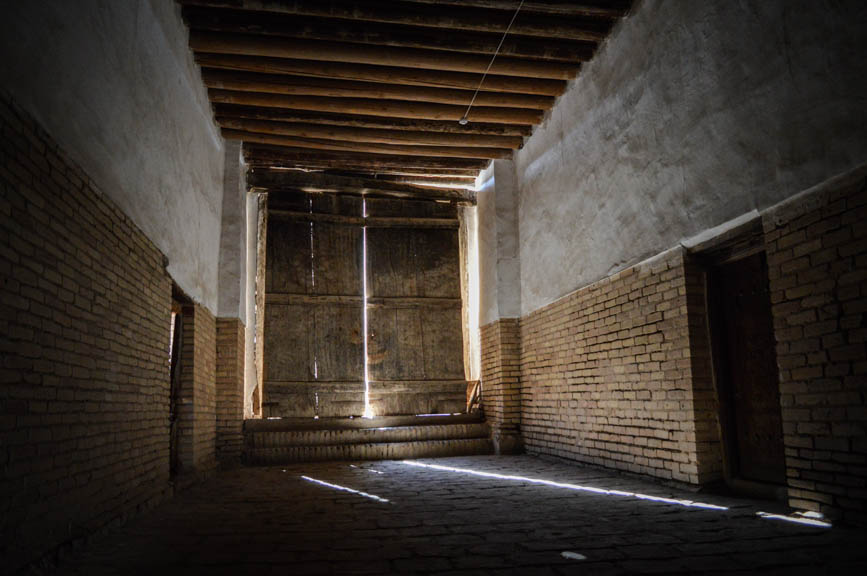
In the sweltering heat of the Uzbek desert, you have two choices, walk around exclusively in the mornings and evenings, or escape into some of the more refreshing hide-outs. My favourite was definitely the Juma Mosque, a large covered interior courtyard, held up by 218 magnificent wooden pillars with a skylight in the middle illuminating the space and awarding it a calmness of a Balinese spa.
There are some less fascinating sights as well, but what they lack in aesthetics, they make up for in pure amusement such as the musical instruments museum where we were treated to an Uzbek music video with more gold-toothed smiles than we could count and a very enthusiastic ticket lady who decided to serenade us along simultaneously.

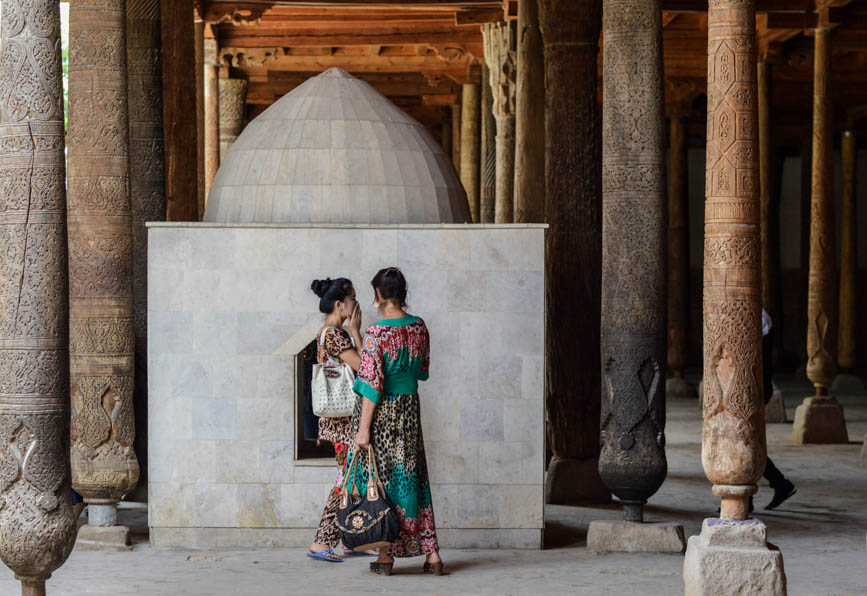
When you tire of the museum route, there is the Khiva Bazaar. Bustling with life just outside the Itchan Kala walls, it is a wonderful way to see some local life when the old city becomes too much of a historical exhibition. It was probably the biggest overall crowd smile we have seen since we left home. Especially from women, everyone was smiling at us, asking us where we were from (of course) and for one of the rare times in my life, great surprise was shown in response to the fact that I was not local or Uzbek. At the crossroads between Europe and Asia, it makes sense that Central Asia would be the place where I would find the most look-alikes, where the majority of the population are also Eurasians. Finally somewhere I can blend in, though generally in the first few seconds of conversation I look slightly idiotic till forced to explain that unfortunately I have no idea what they are saying.
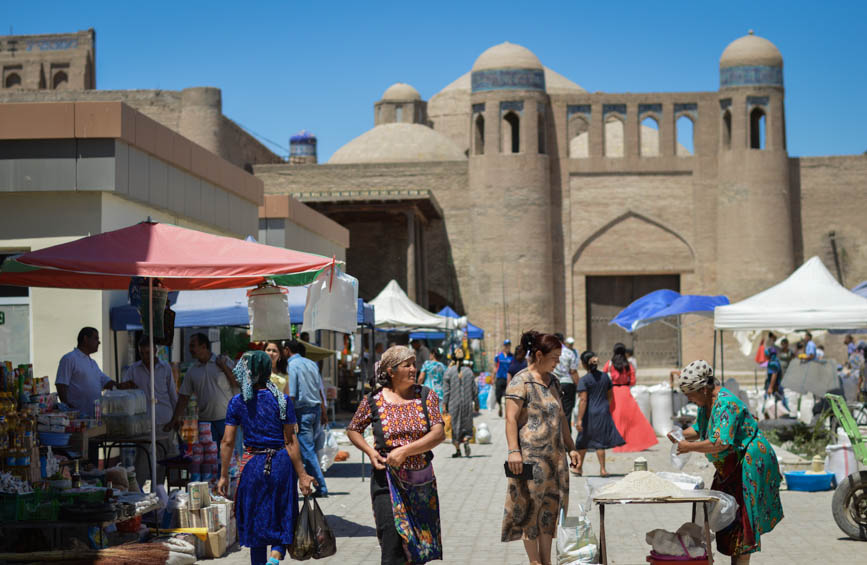
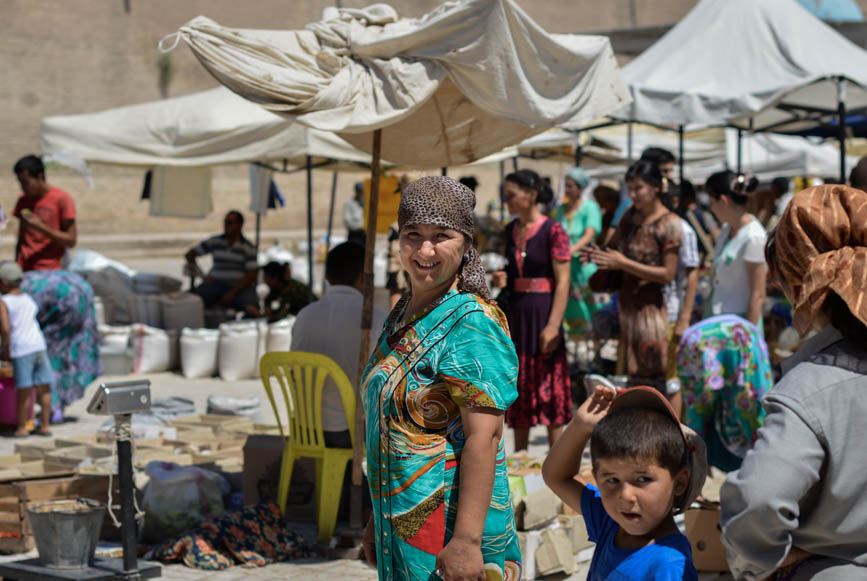
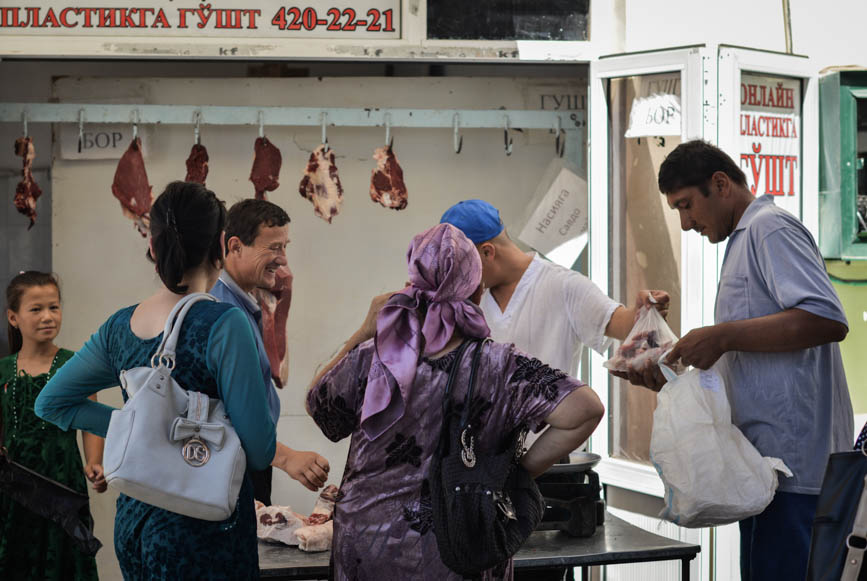
Most people had warned us that Uzbek food was not phenomenal, and while it is not exactly gourmet, we were pleasantly surprised by what we tasted there. Somsa are the street food du jour, little pastries filled with minced meat, onions or potatoes. There are two versions, the electric oven version and the pricier tandoor version, thrown onto the sizzling hot tandoor oven walls where they cling like mini-Spidermen till ready. Forget food trucks, in Uzbekistan there are even portable tandoor ovens on little wheels, ready to go wherever there is dough ready to be baked. The best dish we ate in the country was hands-down Shuvit Oshi – a specialty of the Khorezm region, freshly made dill pasta served with a succulent lamb ragù, who said Uzbek food was bland? (Stay tuned for the recipe here on the blog in the future.)
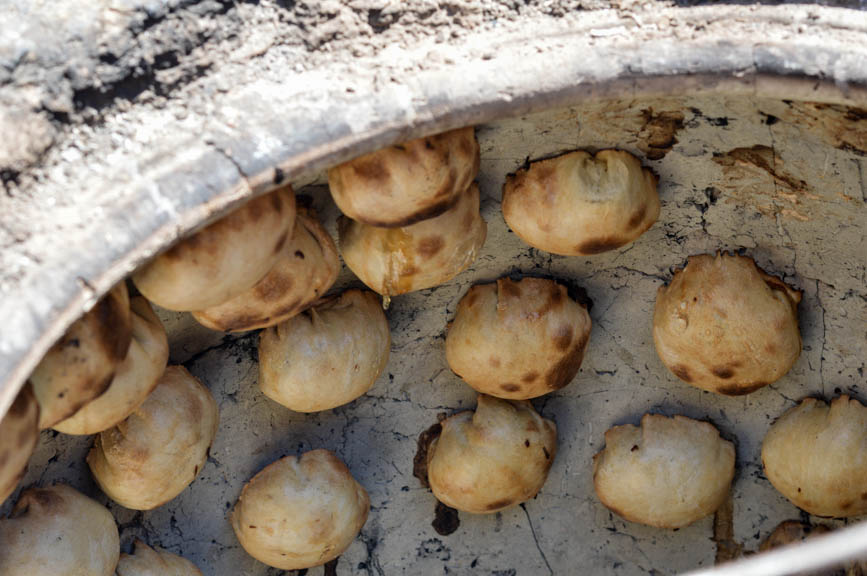
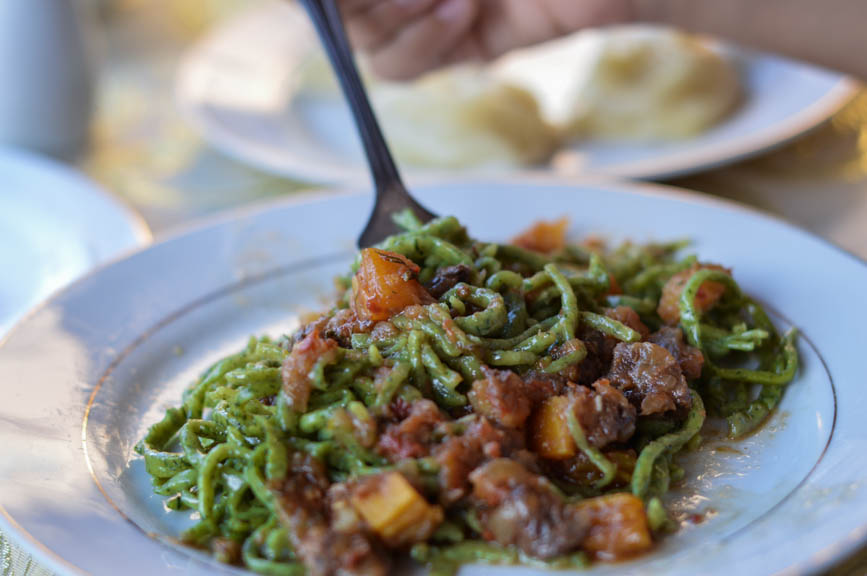
Walking around town there are numerous trinkets for tourists to bring home (another first for us), including mysterious hand-held prickly brushes, resembling antique chinese hair brushes or some acupuncture conception. Turns out they are for stamping pretty patterns on naan (bread), we tried to help take some out of the tandoor oven, but the heat was too much and the local women with hands of steel laughed at our delicate digits as they stuck their hands in without a single squeal.
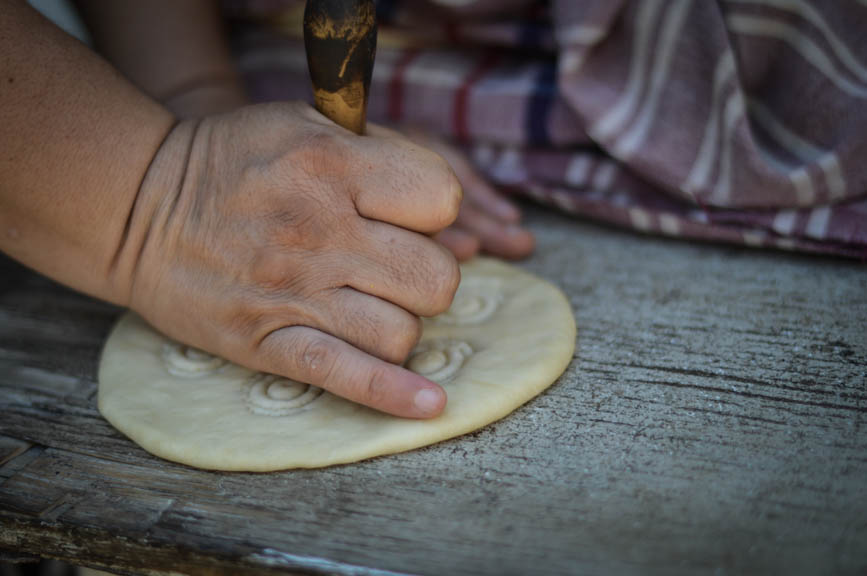
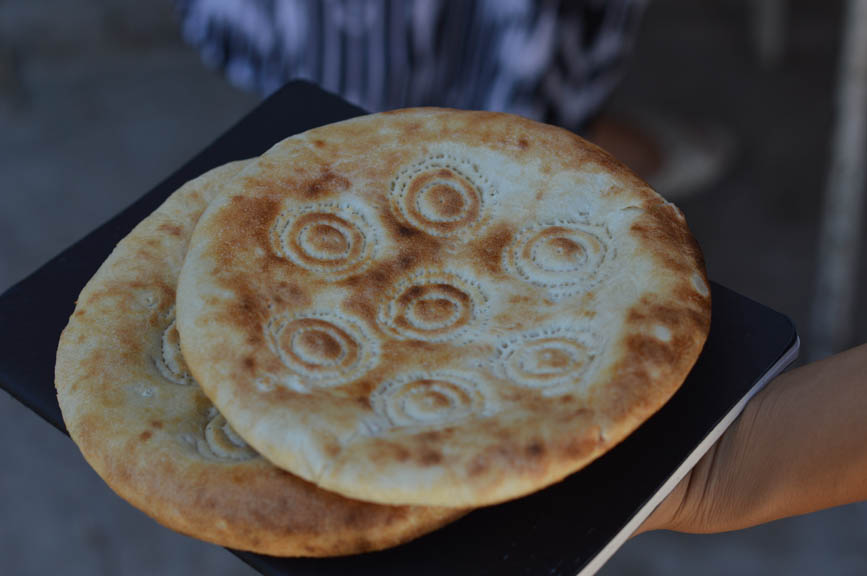
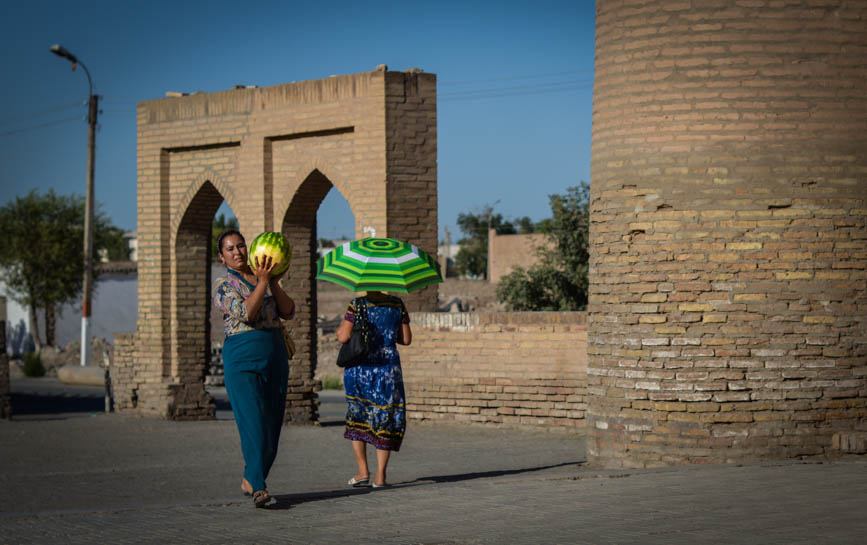
Instead of escaping the heat, we decided to join our German friends for a short excursion to explore the desert castles of ancient Khorezm. Neverending plains of cotton and sand surround these crumbling relics, the Toprak Kala, the Ayaz Qala and the Anka Qala standing tall in the middle of dusty wind twisters. The harsh environment leaves you wondering what it was like when it was constructed by the Tsar’s men in the 1st – 4th centuries AD.
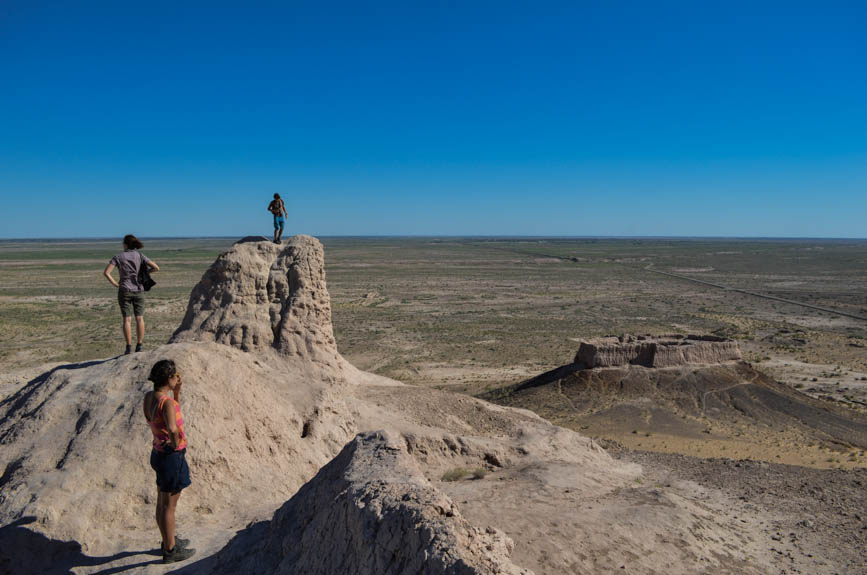
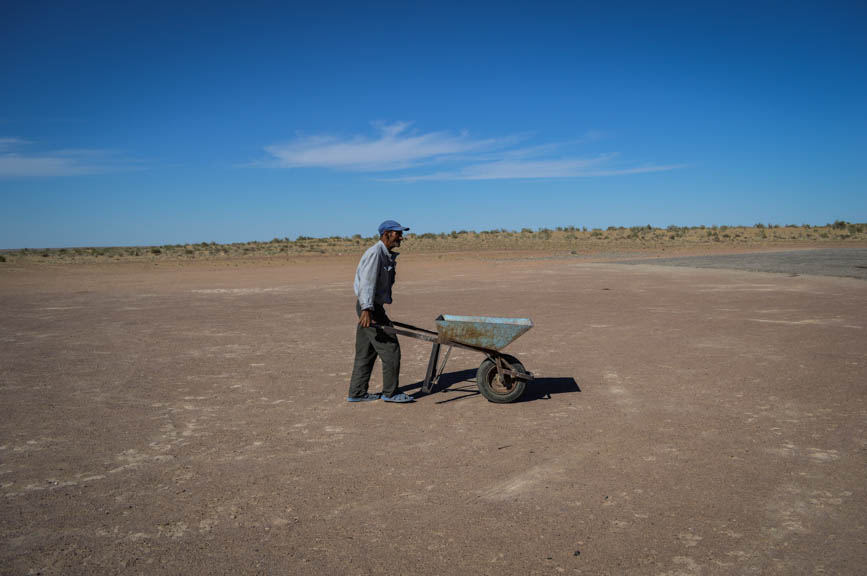
Back in Khiva, the sunset blaze dyes the shades of furquoise and wheat into cobalt and caramel as the fiery heat slowly escapes into the sky and the stars descend with the cooler air. Khiva is definitely the touch of magic sprinkle that welcomes you to Uzbekistan, not a bad place to start exploring Central Asia from. Turkmenistan doesn’t really count.
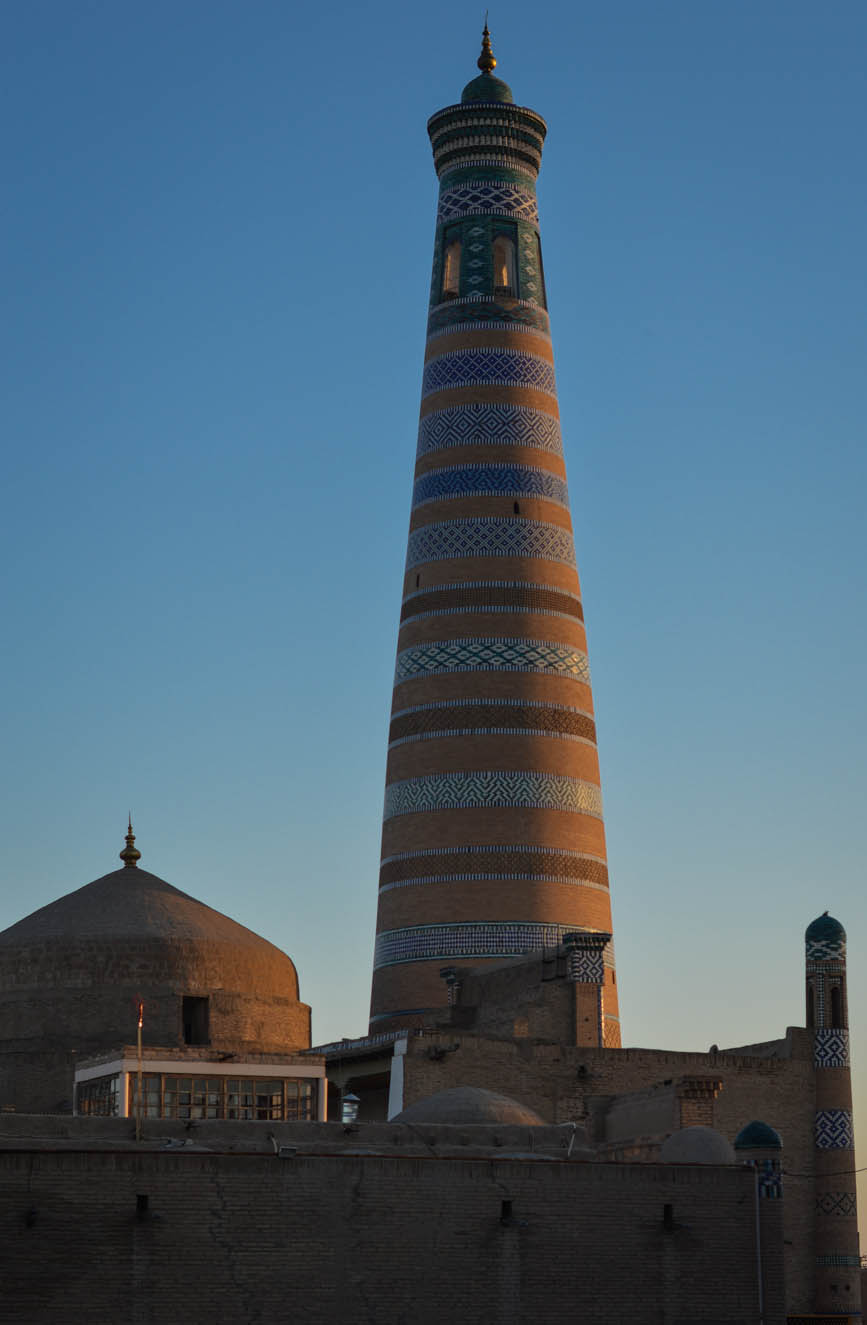






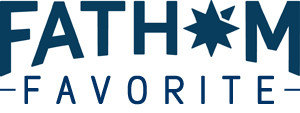
2 Comments
tammy
August 18, 2014Another interesting read! Also nice photos! Beautiful blue sky!
zidane
September 7, 2023thanks for the great article, keep up the good work